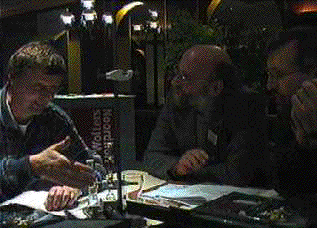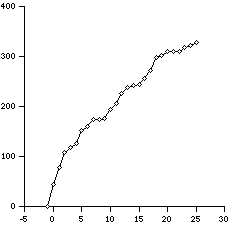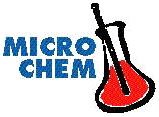
Teachers introduced to microscale chemistry
In the summer of 1989 the microscale laboratory was introduced at the University of Amsterdam. Based on Williamson’s Macroscale and microscale organic experiments half of the second year organic lab was miniaturized. Being successful, the use of microscale glassware was extended to all experiments. Apart from reduction of waste and chemicals being used, the cost of breakage was reduced to 15%. In the summer of 1997 the second year inorganic lab was also miniaturized, based on Microscale inorganic chemistry by Szafran, Pike, and Singh.

Teachers introduced to microscale chemistry
The introduction of the small-scale laboratory in tertiary education is rather easy. Many fine textbooks are available today, and the Journal of Chemical Education offers a section dedicated to the Microscale Laboratory.
This is different for secondary education. Though most schools offer practicals, organic labs are quite rare, due to presumed risks, cost of chemicals, or lack of glassware and suitable experiments. While organic chemistry is immanent in the chemical industry, most practicals deal with watery solutions of inorganic salts.
In the fall of 1996 MicroChem launched the project “Microschaalexperimenten” (project Microscale experiments). Glassware (the Williamson kit manufactured by Kimble-Kontes), a lowcost heating device (our own design), manuals and training were offered to schools for secondary education. The experiments in the manual can be used as an addition to the most popular textbooks. Thanks to grants and support by the chemical industry the costs for the schools were moderate.

Number of schools participating in the project vs months;
0 = 1 January 1997
The project proved to be succesfull. Over 330 schools (about 50%) joined the program, and more than 600 teachers and assistants had to be trained. Two national symposiums on microscale chemistry, November 1998 and March 2000, were both attended by over 100 teachers.
Click here for more information on the project “Microschaalexperimenten”.
Click here for more information on the project “Industrie op microschaal”.

AMSTEL Institute
Microscale Chemistry Center
Kruislaan 404
NL-1098 SM Amsterdam
The Netherlands
Phone: **31 20 5257988
Fax: **31 20 5255866
E-mail: micro@science.uva.nl